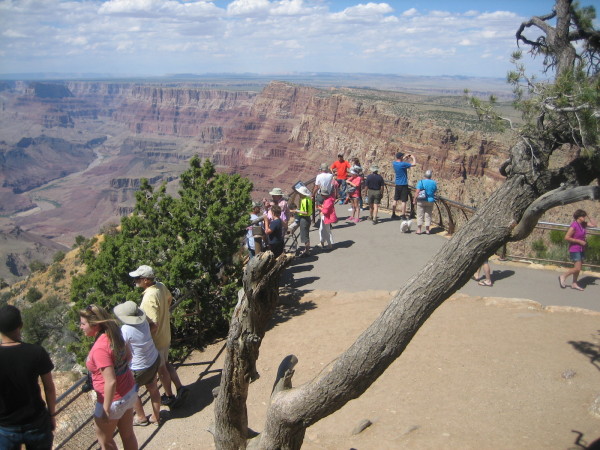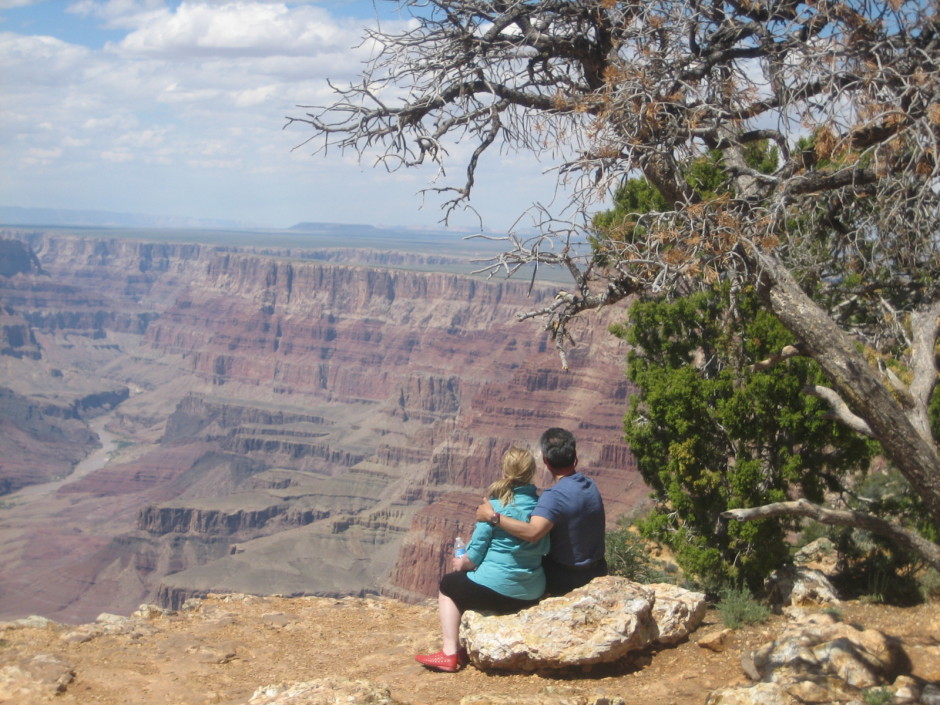A few years ago, en route to Los Angeles, I flew over the Grand Canyon in Arizona, transfixed by its ruggedness, starkness, immensity and otherworldliness.
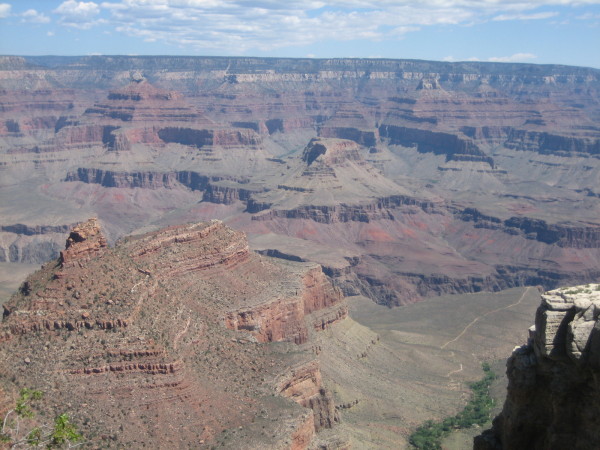
As I gazed upon it from a height of 37,000 feet, I promised to return, but by land.
I fulfilled that pledge recently, spending nearly a full day at this World Heritage site. My younger daughter and I reached the canyon’s south rim by way of Sedona — a sedate town built amid magnificent red rock formations and brimming with upscale spas, boutiques, restaurants and cafes — and a general store in a flyblown village selling native American handicrafts.
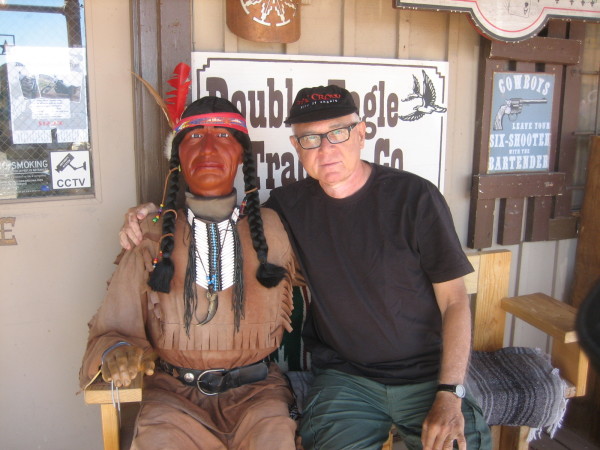
Our guide, a genial German fellow from Berlin who bombarded us with a torrent of stories and anecdotes, deposited us next to the El Tovar, the first hotel built in the canyon. Opened in 1905, three years before President Theodore Roosevelt set aside the area as a protected sanctuary and 14 years after the U.S. Congress created the Grand Canyon National Park, it’s an architectural throwback to an era when hotels were supposed to look rustic and charming.
The El Tovar was constructed to accommodate the flood of tourists who began descending on the canyon after a rail line was opened in 1901. Before then, intrepid travellers braved the elements by camping out in tents under the stars.
The first Europeans to visit the canyon were 16th century Spanish explorers. Their guides, Hoppi Indians, were the original inhabitants of the area. They cultivated corn, beans, squash and cotton in fields adjacent to the mighty Colorado River, whose three-storey white-water rapids promise white-knuckle adventures.
In 1869, a one-armed Civil War veteran, John Wesley Powell, led an expedition along the river. He collected important scientific information about the canyon, which is 227 miles long, up to 18 miles wide and one mile deep. Measuring about 2,600 square miles, it’s slightly larger than the state of Delaware.
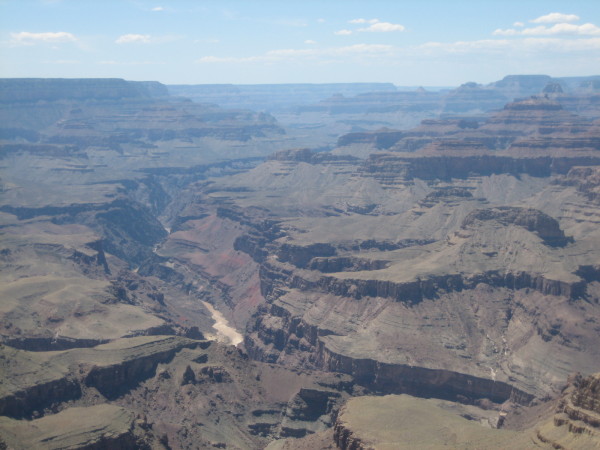
Ninety percent of visitors head to the south rim, which is 7,000 feet above sea level and boasts of some of the purest air in the United States. It’s accessible via a 33-mile road with scenic views and trailheads leading down into the base of the canyon, where the temperature can be 20 degrees warmer.
Although I had seen countless photographs of the canyon in glossy magazines and handsome coffee table books, I was awe-struck by its arresting and boundless beauty.
Rich in flora and fauna, it supports 1,750 species of plants, 90 kinds of mammals and 362 varieties of birds. I saw a squirrel scampering into bushes, a lizard slithering across a path and an elk munching grass, its antlers bristling. These were the extent of my wildlife sightings.
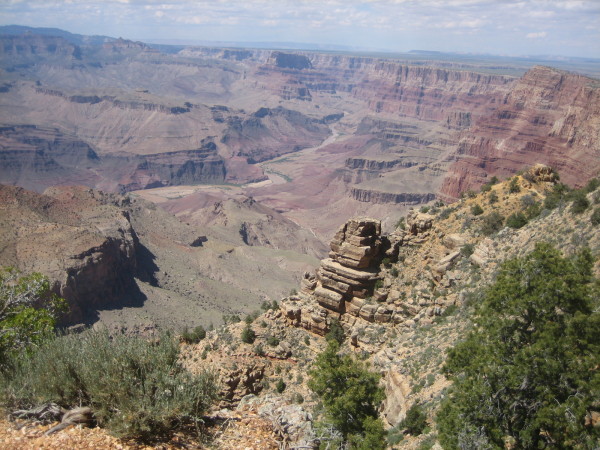
Ultimately, the canyon is all about geology.
Two billion years old in places, and once covered by a tropical ocean which rose and fell 18 times during the course of hundreds of millions of years, it lies within the perimeter of the Colorado Plateau, which was formed 70 million years ago as tectonic plates collided.
Formed by a ceaseless process of erosion involving water, wind and ice, it’s a landscape of exquisitely carved sedimentary rocks in fantastical hues of copper red, green and brown. The palette of colors are constantly in flux, melting into each other and changing in tone as the day wears on.

As luck would have it, the weather was picture perfect when we arrived toward the end of May, certainly better than it had been for much of the soggy spring. The sun shone brightly and the sky was cloudless on a temperate day.
Given the ideal conditions, the views from the lookout points were crystal clear.
One of the finest ones, Desert View, is 7,438 feet above sea level and offers vistas of the Painted Desert. Still better viewing is available from the Watchtower, a black Gothic building 70 feet in height which was finished in 1932. Its walls are decorated with American Indian art and ancient petroglyths.
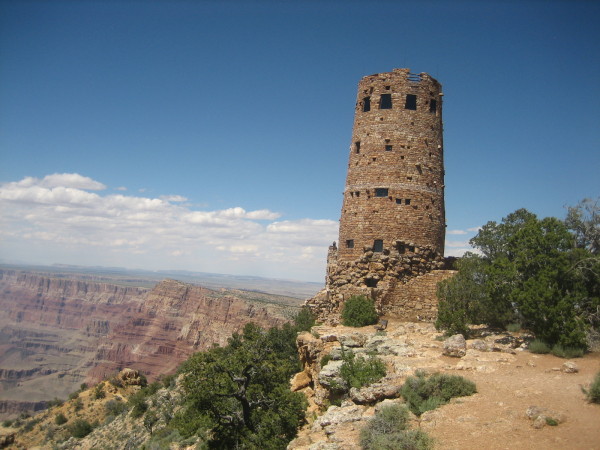
A plaque outside the Watchtower attests to a tragedy that occurred in the vicinity on June 30, 1956, when two commercial airliners crashed into each other at 21,000 feet, resulting in the deaths of 126 passengers and crews and the establishment of the Federal Aviation Agency.
Regrettably, no time was left for a hike into the canyon, which is supposedly an extremely taxing and unparalleled experience. There are four trails leading down to the river — Bright Angel, South Kaibab, Hermit and Dripping Spring — but a round-trip hike in one day is definitely not recommended.
Before you head out, the park’s official newspaper warns, you should “gauge your fitness level, be honest about your health,” and avoid comparisons with your younger self. “Know your limits and avoid spontaneity — Grand Canyon is an extreme environment.”
It’s certainly can be extreme, but it’s also unforgettable.
